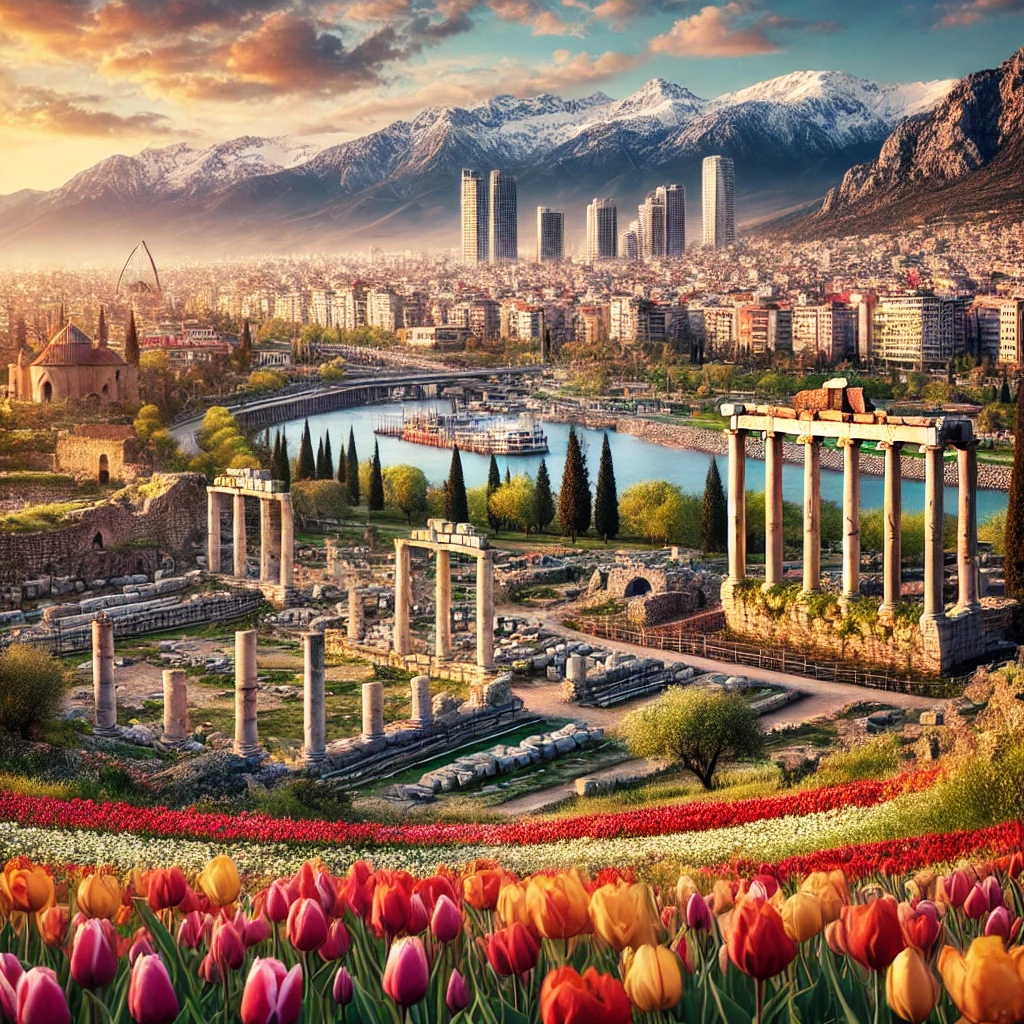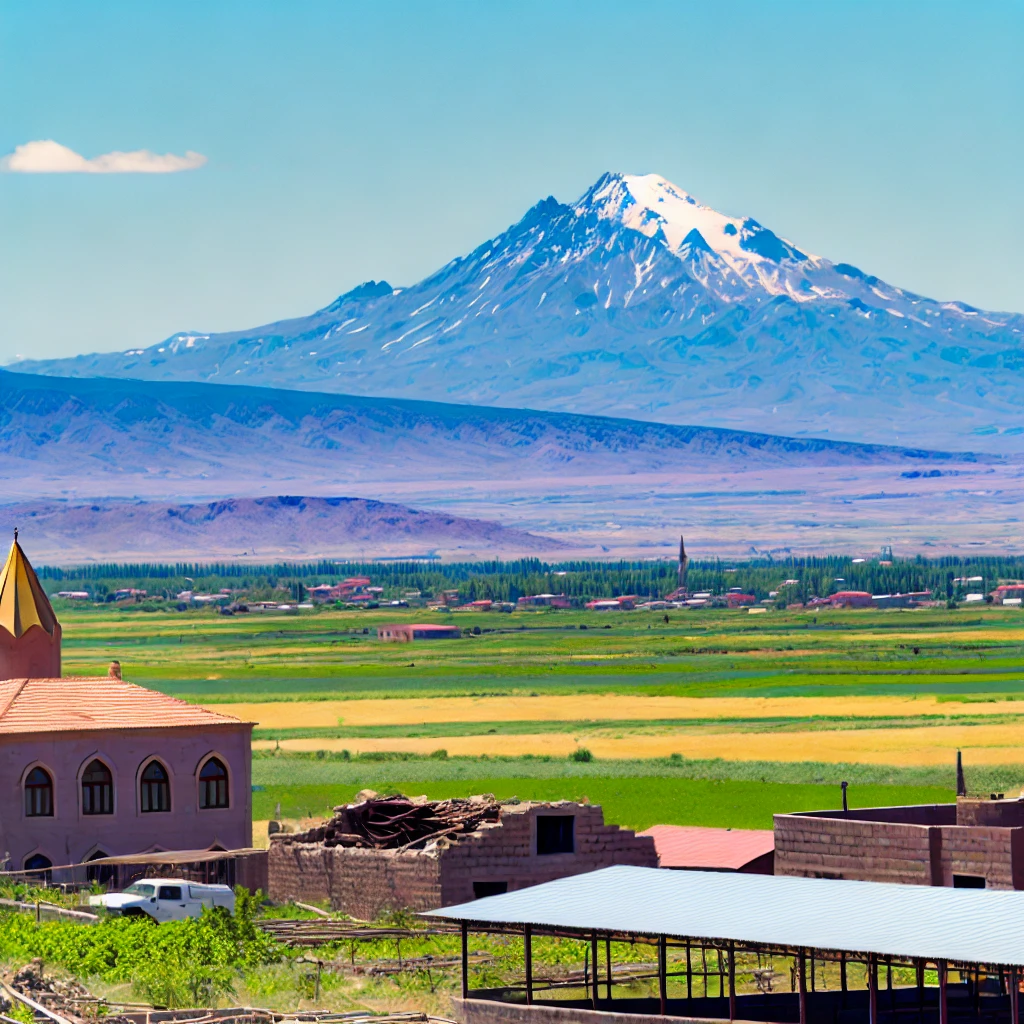Visit Ephesus: A Journey Through Ancient History
Ephesus, located near Selçuk in Turkey’s Izmir province, is one of the most well-preserved ancient cities in the world. This UNESCO World Heritage site offers a captivating glimpse into the past, with ruins that span thousands of years. In this listicle, we’ll explore the top attractions and experiences in Ephesus, ensuring you make the most of your visit to this remarkable destination.
1. The Library of Celsus
Architectural Marvel
One of the most iconic landmarks in Ephesus is the Library of Celsus. Built in the 2nd century AD, this ancient library was once one of the largest libraries of the ancient world, housing thousands of scrolls. The façade of the library is incredibly well-preserved, showcasing the grandeur of Roman architecture.
Historical Significance
The Library of Celsus was constructed in honor of Tiberius Julius Celsus Polemaeanus, a Roman senator and governor of Asia. It served not only as a library but also as his tomb. This site is a testament to the importance of knowledge and learning in ancient Ephesus.
2. The Great Theatre
A Grand Venue
The Great Theatre of Ephesus is a monumental structure that could accommodate up to 25,000 spectators. This impressive theatre was used for various events, including plays, concerts, and gladiatorial contests.
Acoustics and Restoration
The acoustics of the Great Theatre are remarkable, allowing voices to carry throughout the venue without amplification. Ongoing restoration efforts ensure that visitors can experience the theatre’s grandeur as it once was.
3. The Temple of Artemis
One of the Seven Wonders
The Temple of Artemis, also known as the Artemision, was one of the Seven Wonders of the Ancient World. Although only a few remnants remain today, the temple was once a magnificent structure dedicated to the goddess Artemis.
Historical Context
The temple was rebuilt several times over the centuries, each time more grandiose than the last. It played a crucial role in the religious and cultural life of ancient Ephesus, attracting pilgrims from across the ancient world.
4. The Terrace Houses
Insight into Daily Life
The Terrace Houses of Ephesus offer a unique glimpse into the daily lives of the city’s wealthy residents. These well-preserved homes feature intricate mosaics, frescoes, and sophisticated plumbing systems.
Ongoing Excavations
Excavations and restorations are ongoing, allowing visitors to see the detailed work being done to preserve these ancient homes. The Terrace Houses are sometimes referred to as the “Houses of the Rich,” highlighting the luxurious lifestyle of their inhabitants.
5. The Basilica of St. John
A Significant Christian Site
The Basilica of St. John, located on Ayasuluk Hill, is believed to be the burial site of John the Apostle. This 6th-century basilica was built by the Byzantine Emperor Justinian I and is a significant pilgrimage site for Christians.
Architectural Features
The basilica’s impressive ruins include columns, mosaics, and frescoes, offering insight into early Christian architecture. The site also provides panoramic views of the surrounding area, including the nearby Selçuk Castle.
6. The Ephesus Archaeological Museum
Artifacts and Exhibits
The Ephesus Archaeological Museum in Selçuk houses many of the artifacts excavated from the ancient city. The museum’s exhibits include statues, coins, and household items, providing a comprehensive look at life in Ephesus.
Highlights
Notable exhibits include the statue of Artemis and the Gladiator Room, which showcases artifacts related to the gladiatorial games held in Ephesus. The museum is an essential stop for those interested in the detailed history of the city.
7. The Church of Mary
Early Christian Architecture
The Church of Mary, also known as the Double Church, is one of the earliest churches dedicated to the Virgin Mary. It played a significant role in the early Christian councils, including the Council of Ephesus in 431 AD.
Historical Importance
The church’s ruins offer insight into early Christian worship and architecture. The site is considered sacred, attracting pilgrims and visitors interested in the religious history of Ephesus.
8. Curetes Street
A Walk Through History
Curetes Street was one of the main thoroughfares in ancient Ephesus, lined with shops, houses, and public buildings. Walking down this street allows visitors to imagine the bustling life of the city during its peak.
Landmarks Along the Way
Notable landmarks along Curetes Street include the Temple of Hadrian, the Scholastica Baths, and the Fountain of Trajan. Each of these structures adds to the rich tapestry of Ephesus’s history.
9. The House of the Virgin Mary
A Sacred Site
Located on Mount Koressos near Ephesus, the House of the Virgin Mary is believed to be the final residence of Mary, the mother of Jesus. This site is revered by both Christians and Muslims and is a popular pilgrimage destination.
Peaceful Atmosphere
The house is set in a serene environment, surrounded by lush greenery. Visitors can explore the small chapel, drink from the holy spring, and leave prayers at the wishing wall.
10. The Ancient Harbor and Arcadian Way
A Hub of Trade
The ancient harbor of Ephesus was once a bustling hub of trade and commerce. Although the sea has receded over time, the Arcadian Way, which connected the harbor to the city, remains an impressive sight.
Nightly Illumination
The Arcadian Way is beautifully illuminated at night, creating a magical atmosphere. Walking along this ancient road allows visitors to reflect on the city’s rich history and its importance as a trade center.
Conclusion: Exploring the Wonders of Ephesus
Visiting Ephesus is like stepping back in time, offering a unique opportunity to explore one of the ancient world’s most significant cities. From the grandeur of the Library of Celsus and the Great Theatre to the sacred sites like the Basilica of St. John and the House of the Virgin Mary, Ephesus is a treasure trove of historical and cultural wonders. Whether you’re a history enthusiast, a religious pilgrim, or simply a curious traveler, Ephesus promises an unforgettable experience.
For more information and to plan your trip, visit: Visit Ephesus
Latest Update: Jul 9, 2024
Your Content Goes Here
TAGS: ancient Ephesus, Basilica of St. John, Church of Mary, Curetes Street, Ephesus, Ephesus Archaeological Museum, Ephesus attractions, Ephesus history, Great Theatre, House of the Virgin Mary, Library of Celsus, Temple of Artemis, Terrace Houses, travel to Ephesus, visit Ephesus
Welcome to Izmir
A brief summary of the key points in this article.

















